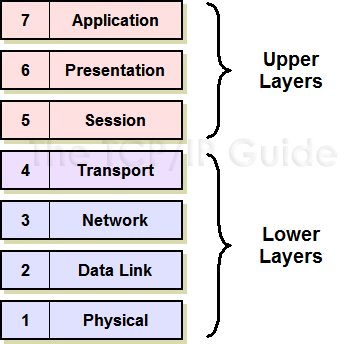 |
|
Please Whitelist This Site?
I know everyone hates ads. But please understand that I am providing premium content for free that takes hundreds of hours of time to research and write. I don't want to go to a pay-only model like some sites, but when more and more people block ads, I end up working for free. And I have a family to support, just like you. :)
If you like The TCP/IP Guide, please consider the download version. It's priced very economically and you can read all of it in a convenient format without ads.
If you want to use this site for free, I'd be grateful if you could add the site to the whitelist for Adblock. To do so, just open the Adblock menu and select "Disable on tcpipguide.com". Or go to the Tools menu and select "Adblock Plus Preferences...". Then click "Add Filter..." at the bottom, and add this string: "@@||tcpipguide.com^$document". Then just click OK.
Thanks for your understanding!
Sincerely, Charles Kozierok
Author and Publisher, The TCP/IP Guide
|
|
|

Custom Search
|
 |
The TCP/IP Guide 9 The Open System Interconnection (OSI) Reference Model 9 Key OSI Reference Model Concepts |
|
OSI Reference Model Networking Layers, Sublayers and Layer Groupings
(Page 2 of 3)
OSI Reference Model Layer Groupings
The OSI Reference Model does not formally assign any relationship between groups of adjacent layers. However, to help explain how the layers work, it is common to categorize them into two layer groupings:
- Lower Layers (Layers 1, 2, 3 and 4): The
lower layers of the model—physical, data link, network
and transport—are primarily concerned with the formatting,
encoding and transmission of data over the network. They don't care
that much about what the data is or what it is being used for, just
about moving it around. They are implemented in both hardware and software,
with the transition from hardware to software occurring as you proceed
up from layer 1 to layer 4.
- Upper Layers (Layers 5, 6 and 7): The
higher layers of the model—session, presentation
and application—are the ones that are concerned primarily
with interacting with the user, and implementing the applications that
run over the network. The protocols that run at higher layers are less
concerned with the low-level details of how data gets sent from one
place to another; they rely on the lower layers to provide delivery
of data. These layers are almost always implemented as software running
on a computer or other hardware device.
Figure 11: OSI Reference Model Layers
The OSI Reference Model divides networking functions into a stack of seven layers, numbered 1 through 7 from the bottom up. To help illustrate the differing levels of abstraction between layers near the top and those on the bottom, they are sometimes divided into two layer groupings—the lower layers and the upper layers. Of course, not everyone agrees on exactly how the division should be accomplished. In particular, the transport layer is sometimes considered an upper layer and sometimes a lower layer.

There are some who would not necessarily agree with how I have chosen to divide the layers above. In particular, valid arguments can be made for including the transport layer in the upper layer group, since it is usually implemented as software and is fairly abstract. I believe it is better as part of the lower layer group since its primary job is still providing services to higher layers for moving data, however. Really, layer 4 is somewhat of a “transition zone” and is hard to categorize. Figure 11 shows how I divide the OSI Reference Model layers into groups and indicates the special position of layer 4 in the stack.
|
|
| |||||||||||||||||||
Home - Table Of Contents - Contact Us
The TCP/IP Guide (http://www.TCPIPGuide.com)
Version 3.0 - Version Date: September 20, 2005
© Copyright 2001-2005 Charles M. Kozierok. All Rights Reserved.
Not responsible for any loss resulting from the use of this site.






 Key Concept: The most fundamental concept in the OSI Reference Model is the division of networking functions into a set of layers, from layer one at the bottom to layer seven at the top. As you go up the layer stack, you move away from concrete, hardware-specific functions to ones that are increasingly abstract, until reaching the realm of user applications at layer seven. The seven layers are sometimes divided into groupings: the lower layers (one, two and three) and the upper layers (four through seven). There is some disagreement on whether layer four is a lower or upper layer.
Key Concept: The most fundamental concept in the OSI Reference Model is the division of networking functions into a set of layers, from layer one at the bottom to layer seven at the top. As you go up the layer stack, you move away from concrete, hardware-specific functions to ones that are increasingly abstract, until reaching the realm of user applications at layer seven. The seven layers are sometimes divided into groupings: the lower layers (one, two and three) and the upper layers (four through seven). There is some disagreement on whether layer four is a lower or upper layer.